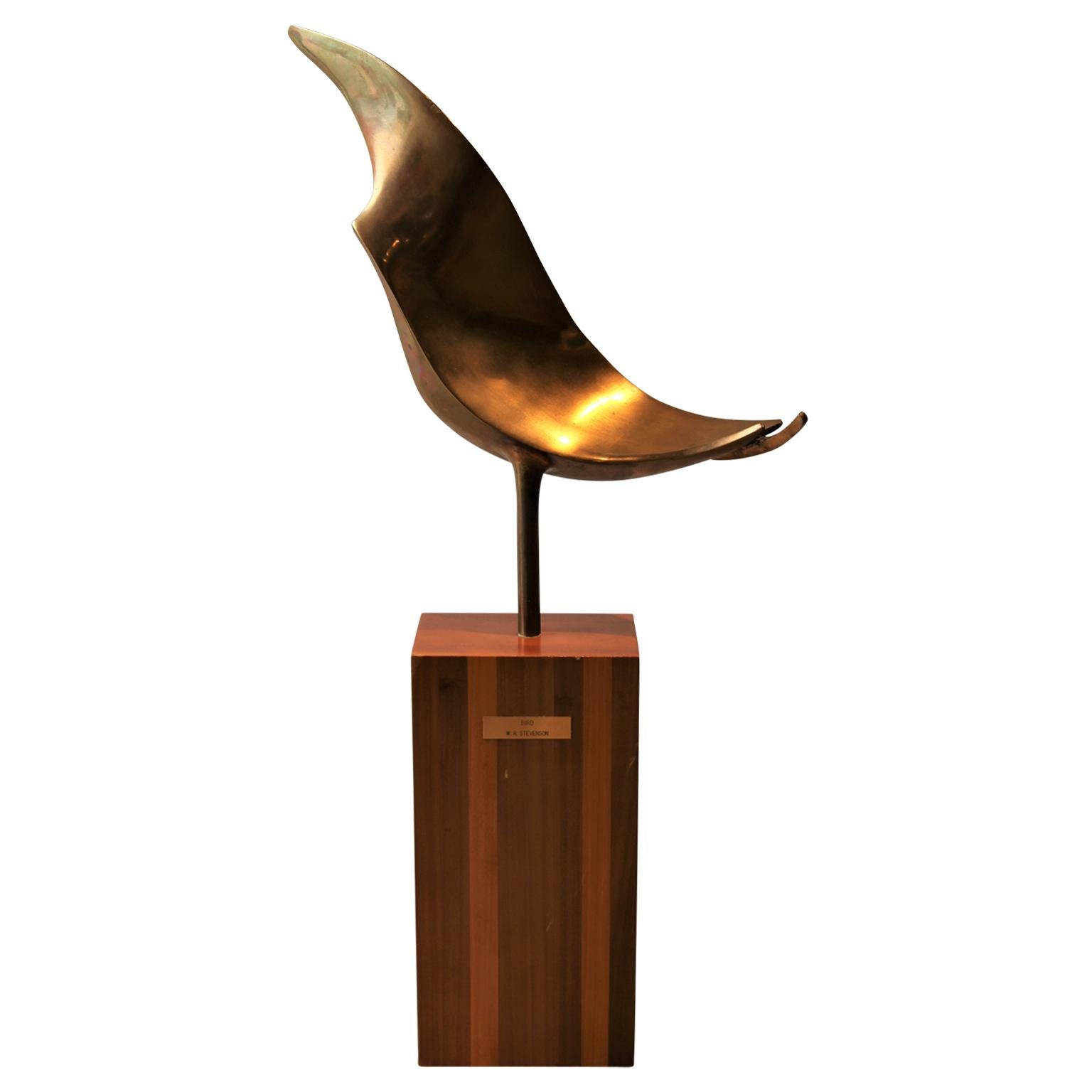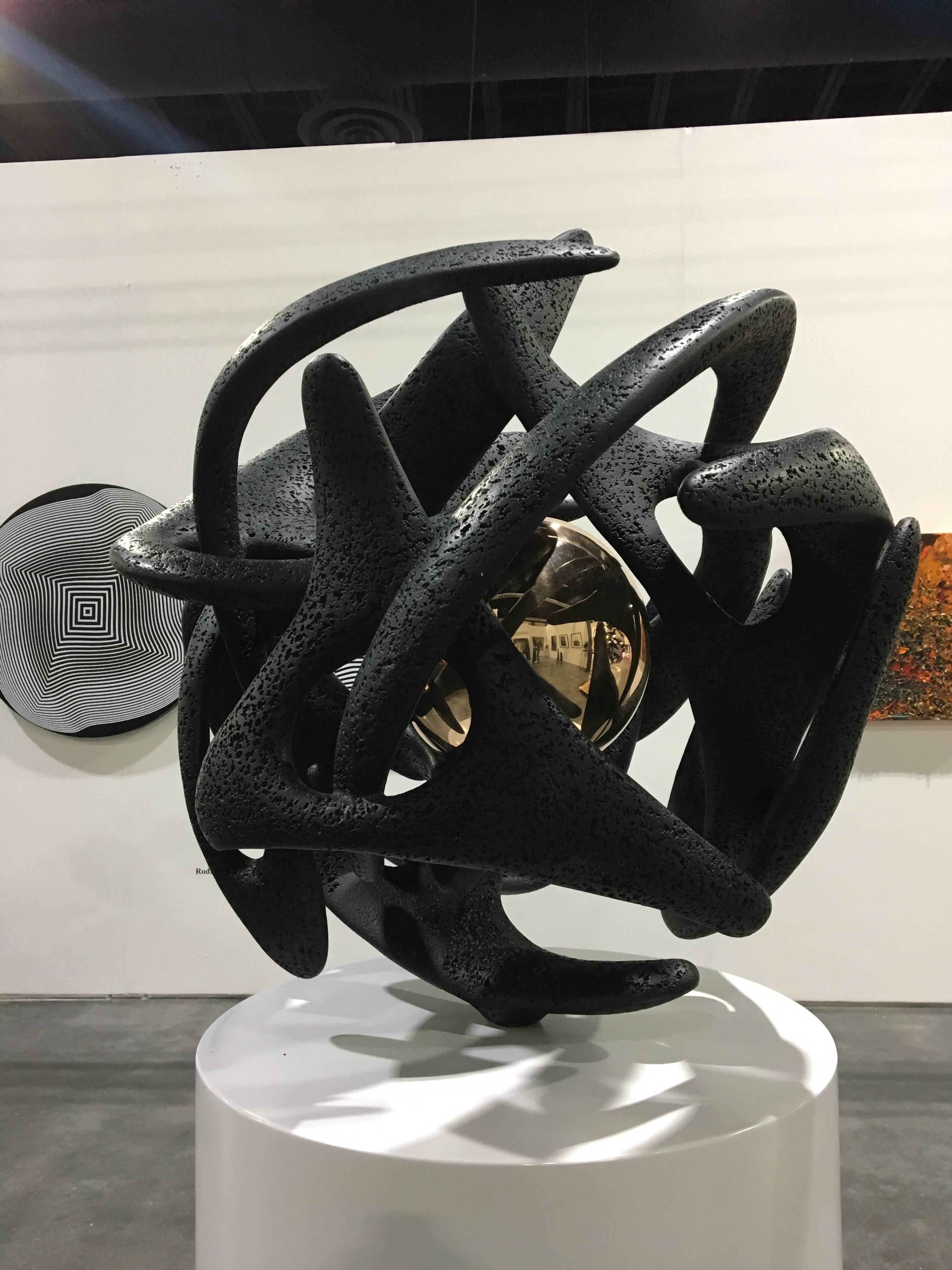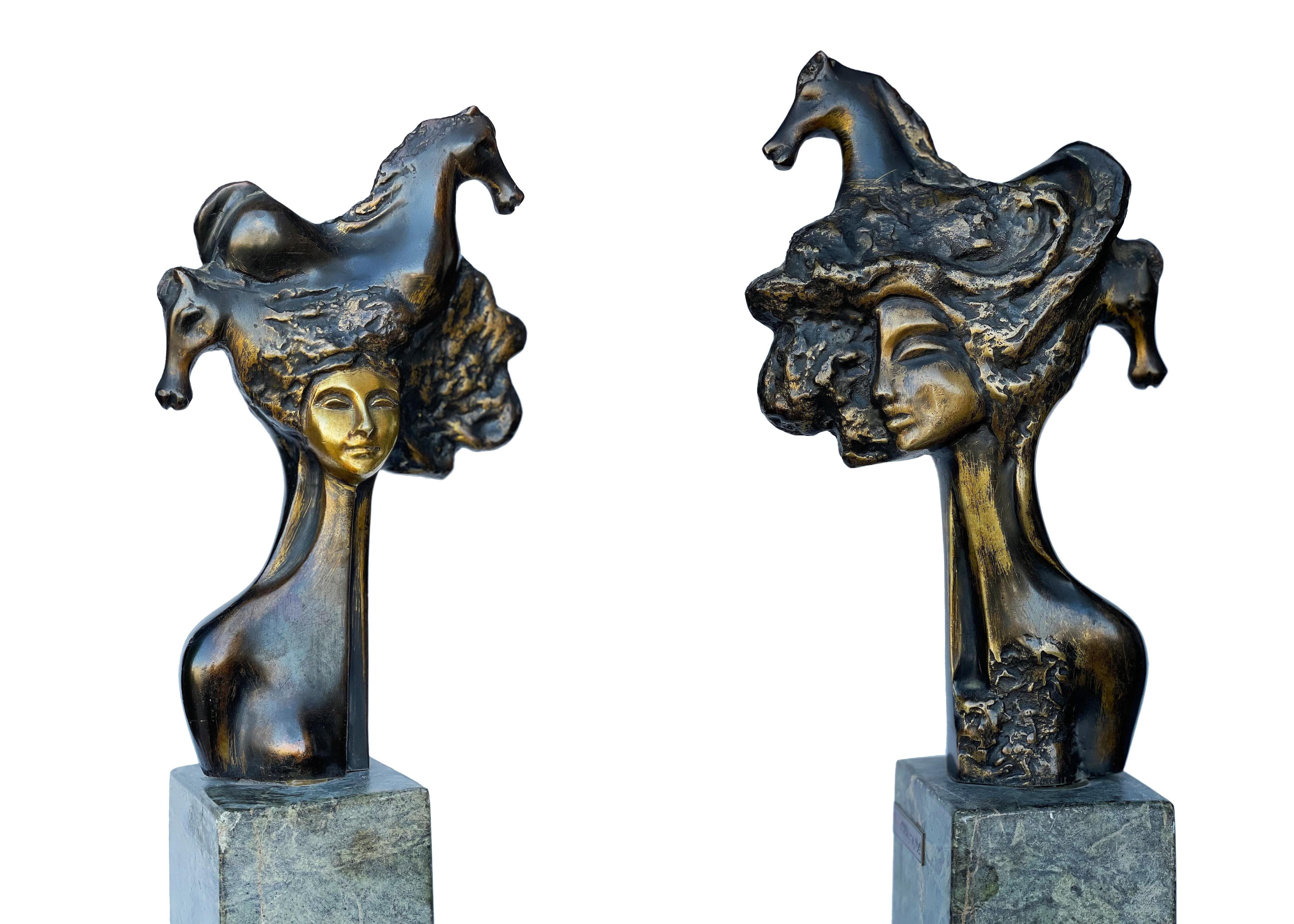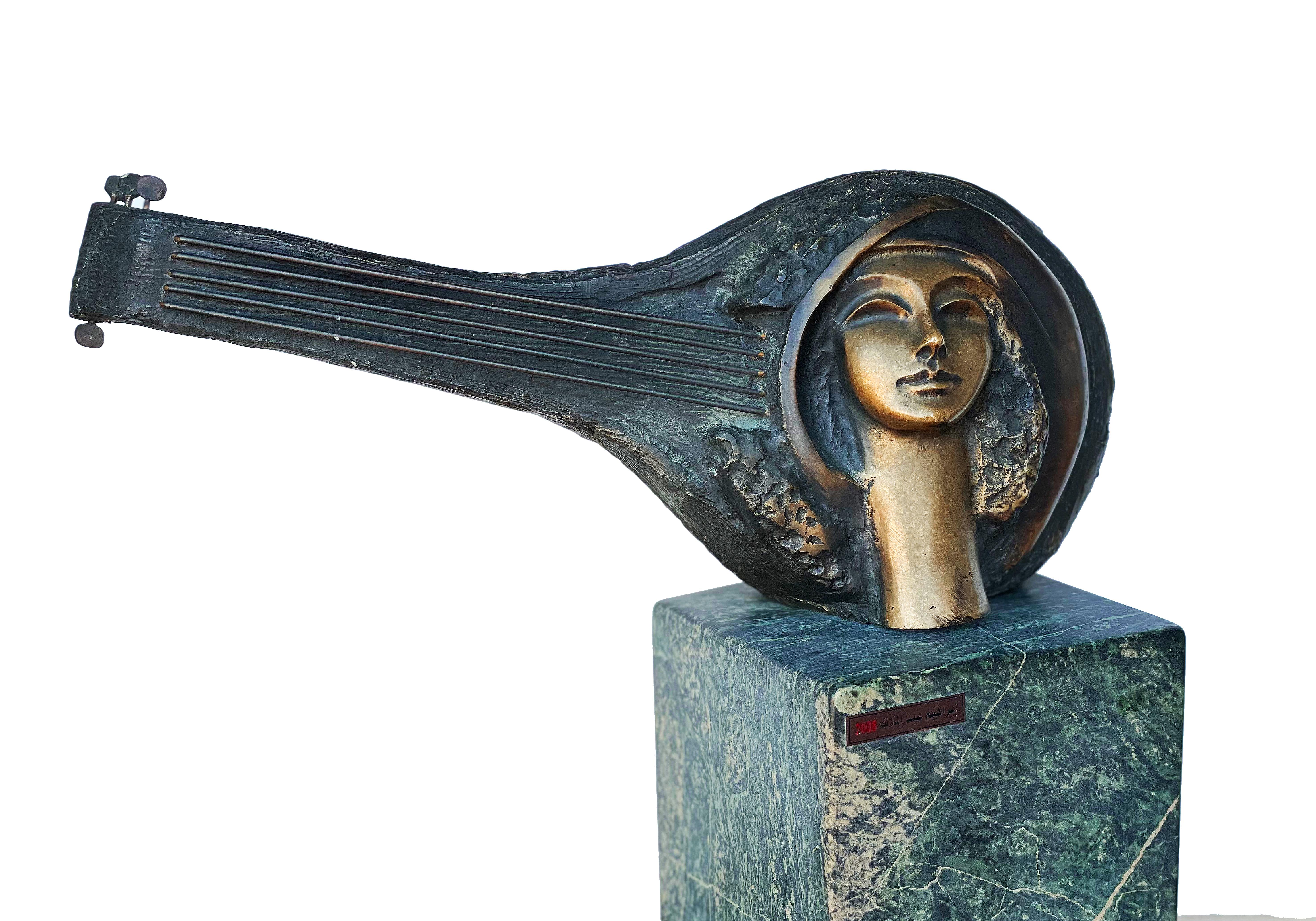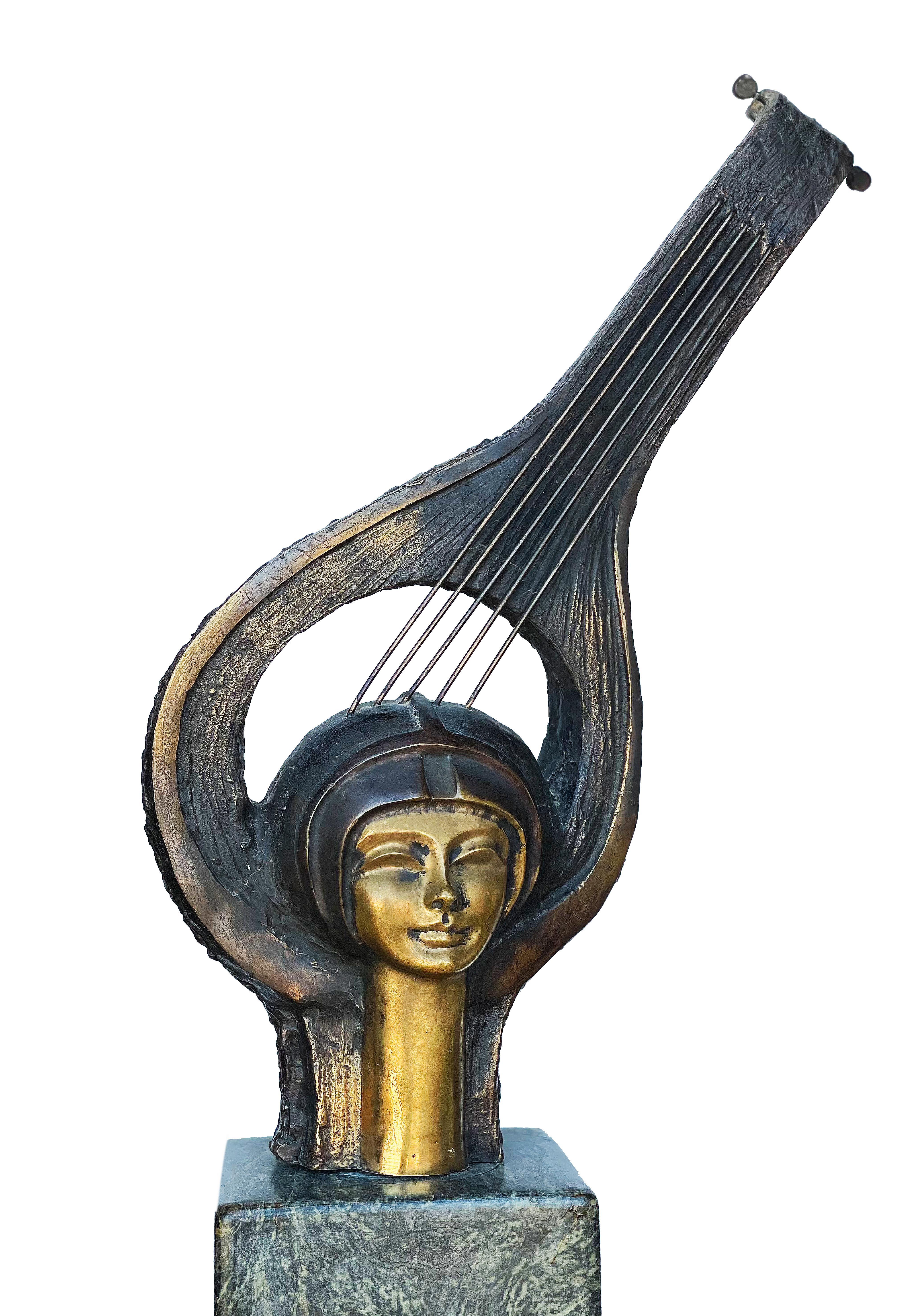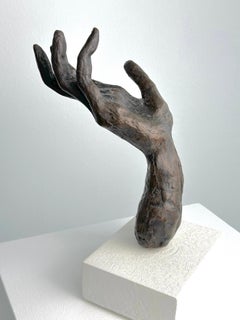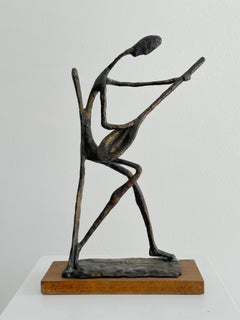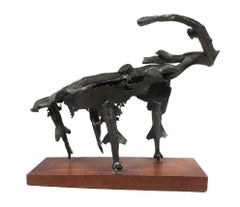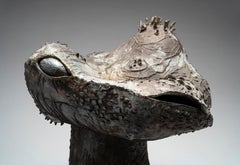
Female Figure (abstract woman bronze sculpture)
View Similar Items
Want more images or videos?
Request additional images or videos from the seller
1 of 13
Nancy DryfoosFemale Figure (abstract woman bronze sculpture)ca. 1950
ca. 1950
About the Item
- Creator:Nancy Dryfoos (1919 - 1991)
- Creation Year:ca. 1950
- Dimensions:Height: 9.25 in (23.5 cm)Width: 5.88 in (14.94 cm)Depth: 4.88 in (12.4 cm)
- Medium:
- Movement & Style:
- Period:
- Condition:
- Gallery Location:Wilton Manors, FL
- Reference Number:1stDibs: LU24527269102
About the Seller
4.9
Gold Seller
These expertly vetted sellers are highly rated and consistently exceed customer expectations.
Established in 2007
1stDibs seller since 2015
328 sales on 1stDibs
Typical response time: 2 hours
More From This SellerView All
- Reclining Figure (woman)By William King (b.1925)Located in Wilton Manors, FLWilliam King (1925-2015). Reclining figure, ca. 1965. Cast and welded bronze, 7 x 9.5 x 5 inches. Unsigned. William King, a sculptor in a variety of materials whose human figures traced social attitudes through the last half of the 20th century, often poking sly and poignant fun at human follies and foibles, died on March 4 at his home in East Hampton, N.Y. He was 90. His death was confirmed by Scott Chaskey, who is married to Mr. King's stepdaughter, Megan Chaskey. Mr. King worked in clay, wood, bronze, vinyl, burlap and aluminum. He worked both big and small, from busts and toylike figures to large public art pieces depicting familiar human poses -- a seated, cross-legged man reading; a Western couple (he in a cowboy hat, she in a long dress) holding hands; a tall man reaching down to tug along a recalcitrant little boy; a crowd of robotic-looking men walking in lock step. But for all its variation, what unified his work was a wry observer's arched eyebrow, the pointed humor and witty rue of a fatalist. His figurative sculptures, often with long, spidery legs and an outlandishly skewed ratio of torso to appendages, use gestures and posture to suggest attitude and illustrate his own amusement with the unwieldiness of human physical equipment. His subjects included tennis players and gymnasts, dancers and musicians, and he managed to show appreciation of their physical gifts and comic delight at their contortions and costumery. His suit-wearing businessmen often appeared haughty or pompous; his other men could seem timid or perplexed or awkward. Oddly, or perhaps tellingly, he tended to depict women more reverentially, though in his portrayals of couples the fragility and tender comedy inherent in couplehood settled equally on both partners. Mr. King's work is in the collections of the Metropolitan Museum of Art and the Museum of Modern Art in New York and the Smithsonian American Art Museum in Washington, among other places, and he had dozens of solo gallery shows in New York and elsewhere. But the comic element of his work probably caused his reputation to suffer. Reviews of his exhibitions frequently began with the caveat that even though the work was funny, it was also serious, displaying superior technical skills, imaginative vision and the bolstering weight of a range of influences, from the ancient Etruscans to American folk art to 20th-century artists including Giacometti, Calder. and Elie Nadelman. The critic Hilton Kramer, one of Mr. King's most ardent advocates, wrote in a 1970 essay accompanying a New York gallery exhibit that he was, "among other things, an amusing artist, and nowadays this can, at times, be almost as much a liability as an asset." A "preoccupation with gesture is the focus of King's sculptural imagination," Mr. Kramer wrote. "Everything that one admires in his work - the virtuoso carving, the deft handling of a wide variety of materials, the shrewd observation and resourceful invention - all this is secondary to the concentration on gesture. The physical stance of the human animal as it negotiates the social arena, the unconscious gait that the body assumes in making its way in the social medium, the emotion traced by the course of a limb, a torso, a head, the features of a face, a coiffure or a costume - from a keen observation of these materials King has garnered a large stock of sculptural images notable for their wit, empathy, simplicity and psychological precision." William Dickey King...Category
Mid-20th Century Abstract Abstract Sculptures
MaterialsBronze
$2,800 Sale Price30% Off - Reaching (bronze hand)Located in Wilton Manors, FLReaching, ca. 1980. Cast bronze. Signed in lower region on wrist. A rare example from the artist's later period influenced by figurative abstraction with expressionist tendencies. James Edward Lewis (August 4, 1923 – August 9, 1997) was an African-American artist, art collector, professor, and curator in the city of Baltimore. He is best known for his role as the leading force for the creation of the James E. Lewis Museum of Art, an institution of the HBCU Morgan State University. His work as the chairman of the Morgan Art Department from 1950 to 1986 allowed for the museum to amass a large collection of more than 3,000 works, predominantly of African and African diasporan art.[1] In addition, he is also well known for his role as an interdisciplinary artist, primarily focused on sculpture, though also having notable examples of lithography and illustration. His artistic style throughout the years has developed from an earlier focus on African-American history and historical figures, for which he is most notable as an artist, to a more contemporary style of African-inspired abstract expressionism. Early and personal life James E. Lewis was born in rural Phenix, Virginia on August 4, 1923 to James T. Lewis and Pearline (Pearlean) Harvey.[5] Lewis' parents were both sharecroppers. Shortly after his birth, his father moved to Baltimore for increased job opportunity; James E. was subsequently raised by his mother until the family was reunited in 1925. They lived for a short time with distant relatives until moving to a four-bedroom house on 1024 North Durham Street in East Baltimore, a predominantly African-American lower-class neighborhood close to Johns Hopkins Hospital. Lewis' primary school, PS 101, was the only public school in East Baltimore that served black children. Lewis grew up in a church-going family, his parents both active members of the Faith Baptist Church, devoting the entirety of their Sundays to church activities. His parents worked a variety of different jobs throughout his youth:[6] his father working as a stevedore for a shipping company, a mechanic, a custodian, a mailroom handler,[6] and an elevator operator.] His mother worked as both a clerk at a drugstore[7] and a laundress for a private family.[4] Lewis' primary exposure to the arts came from Dr. Leon Winslow, a faculty member at PS 101 who Lewis saw as "providing encouragement and art materials to those who wanted and needed it." In fifth grade, Lewis transferred to PS 102. Here, he was able to receive specialized Art Education in Ms. William's class under the guidance of Winslow. He was considered a standout pupil at PS 102 as a result of his introduction to the connection between the arts and the other studies. His time spent in Ms. Pauline Wharton's class allowed for him to experiment with singing, to which he was considered a talented singer. His involvement in this class challenged his earlier belief that singing was not a masculine artistic pursuit. He was able to study both European classics and negro spirituals, which was one of his earliest introductions to arts specific to American black culture. Under Ms. Wharton's direction, he was also involved in many different musical performances,[6] including some works of the Works Progress Administration's Federal Theatre Project.[8] Lewis attended Paul Laurence Dunbar High School, where his love of the arts was heightened through his industrial art class with Lee Davis...Category
Mid-20th Century Abstract Expressionist Abstract Sculptures
MaterialsBronze
- Greek Guitar PlayerLocated in Wilton Manors, FLBeautiful abstract sculpture depicting a guitar player. Bronze on wood base measuring 15 x 9 x 4 inches. Actual cast piece without base measuring 17 x 7 x 3 inches. Signed indistinct...Category
Mid-20th Century Abstract Abstract Sculptures
MaterialsBronze
- Abstract FigureBy Raul DiazLocated in Wilton Manors, FLRaul Diaz (Argentina, b.1950). Abstract Figure, ca. 1970s. Canved Walnut. Measures 17 inches tall including wood base. Carved signature in lower region. Excellent condition. An ear...Category
1970s Abstract Expressionist Abstract Sculptures
MaterialsWalnut
$1,200 - Walking Man with DiscBy Ernest TrovaLocated in Wilton Manors, FLBeautiful figural sculpture by American artist, Ernest Tino Trova (1927-2009). Walking Man with Disc (working study), 1966. Brass sheet with cut-out figure in profile, sheet measures...Category
Mid-20th Century Abstract Figurative Sculptures
MaterialsBrass
$1,200 Sale Price65% Off - Standing FigureLocated in Wilton Manors, FLTom Cramer (b.1960). Standing Figure, 1998. Carved wood and polymer paint. Measures 17.5 inches high. Excellent condition. Signed and dated under base. Tom Cramer is an American artist working in Portland, Oregon noted for his intricately carved and painted wood reliefs and ubiquity throughout the city of Portland. Often called the unofficial Artist Laureate of Portland,[2] Cramer is one of the most visible and successful artists in the city. The influences on his work are both organic and technological. He is widely collected and is in many prominent west coast museum and private collections. He is in the permanent collections of the Portland Art Museum[3] in Portland Oregon, the Halle Ford Museum in Salem Oregon, the Jordan Schnitzer Museum in Eugene, Oregon, the Boise Art Museum in Idaho. Cramer made a name for himself in the 1980s and 1990s becoming a bridge between historical Oregon artists like Clifford Gleason and Milton Wilson...Category
Late 20th Century Neo-Expressionist Figurative Sculptures
MaterialsWood, Latex
You May Also LikeView All
- Bronze Sculpture Abstract Brutalist Goat or Ram WPA Artist Mounted on BaseBy Benedict Michael TattiLocated in Surfside, FLBenedict Tatti (1917-1993) worked in New York city as a sculptor, painter, educator, and video artist. He studied stone and wood carving under Louis Slobodkin at the Roerich Museum. He later attended the Leonardo da Vinci School of Art studying under Attilio Piccirelli. In l939 he taught adult classes with the Teachers Project of the WPA and attended the Art Students League for three and a half years on full scholarship. He studied under William Zorach and Ossip Zadkine and later became Zorach’s assistant. Later in his career, he attended the Hans Hofmann School of Fine Arts. During World War II, Tatti served in the United States Army Air Force, where he spent three years assigned to variety of projects. In 1948, Benedict Tatti married Adele Rosenberg in New York City. Throughout his career, Tatti continuously experimented with various media. From 1952-1963, Tatti executed sculptural models of architectural and consumer products for the industrial designers, Raymond Loewy Associates; later he became a color consultant for the firm. In the 1960s, influenced by the Abstract Expressionists, Tatti turned from carving directly in wood and stone to creating assemblage architecture sculptures, using bronze metal and other industrial materials. He was included in the important show "Aspects de la Sculpture Americaine", at Galerie Claude Bernard Paris, France, in October 1960 along with Ibram Lassaw, Theodore Roszak, David Smith, Louise Bourgeois, Danese Corey, Dorothy Dehner, Lin Emery...Category
Mid-20th Century Abstract Expressionist Abstract Sculptures
MaterialsBronze
- "Bird" Abstract Bronze Sculpture with Wooden BaseLocated in Houston, TXW. R. Stevenson's abstract bronze sculpture titled "Bird". The unique sculpture stands on a sleek wooden base and has a plaque that includes the artist and title. Artist Biography: William Robert Stevenson was born in 20 May 1925 in Eugene, Oregon. His family moved to Minneapolis, MN but he promptly returned to Oregon and Washington during the Great Depression to work in the Works Progress Administration (WPA). Hoping to study Art, his future was sidetracked when he was drafted into the United States Army at age 17 years old in early 1942. Being a strong swimmer, and having worked at stables as a child, he initially served in the last US Cavalry Corps, and also as a Swimming Instructor for the United States Army. Upon the abolition of the Cavalry Corps, he was trained as a Gunnar and Tank Commander for the M-4 Sherman Tank under General Patton...Category
20th Century Abstract Abstract Sculptures
MaterialsBronze
- Latin American Sculpture by Raúl ValdiviesoBy Raúl ValdiviesoLocated in Washington, DCBronze sculpture by Latin American sculptor Raúl Valdivieso (Chilean, 1931-1993). Valdivieso is known for his reinterpretation of the classic organic forms and human figures. Raúl Valdiveso was born September 9, 1931 in Santiago, Chile. In 1952 he began his studies at the School of Fine Arts at the University of Chile. There he took to sculpture and studied under professors like Marta Colvin...Category
1960s Abstract Abstract Sculptures
MaterialsBronze
- Sfera QuanticaBy Gianfranco MeggiatoLocated in Palm Beach, FLKinetic bronze sculpture by Gianfranco Meggiato. Gianfranco Meggiato was born on August 26, 1963 in Venice, where he studied stone, bronze, wood and ceramics sculpture at the Istitu...Category
2010s Abstract Abstract Sculptures
MaterialsBronze
- Monumental Outdoor Kinetic Bronze Sculpture "Cubo con Cubo", Gianfranco MeggiatoBy Gianfranco MeggiatoLocated in Palm Beach, FLBronze sculpture by Gianfranco Meggiato. Gianfranco Meggiato was born on August 26, 1963 in Venice, where he studied stone, bronze, wood and ceramics sculpture at the Istituto Stata...Category
2010s Abstract Figurative Sculptures
MaterialsBronze
- Monumental Outdoor Bronze sculpture "Sfera Antares" by Gianfranco MeggiatoBy Gianfranco MeggiatoLocated in Palm Beach, FLBeautiful kinetic out-door sculpture by Gianfranco Meggiato. Bronze. Gianfranco Meggiato was born on August 26, 1963 in Venice, where he studied stone, bronze, wood and ceramics scu...Category
2010s Abstract Abstract Sculptures
MaterialsBronze
Recently Viewed
View AllMore Ways To Browse
Wood Signed Sculpture Figural Mid Century
Abstract Marble Sculpture Female
Bronze Sculpture Signed With A V
Abstract Marble Sculpture Woman
W Rochelle
M Falk
Vintage Knickerbocker
Wedgwood Mahogany
Constance Marble
K Collings
Wedgwood Columbia
Mems V
Nancy Dryfoos
Rodan Kane Hart
Michael Wisner Pottery
Eric Zammitt
Alison Brannen
Parametric Wall

